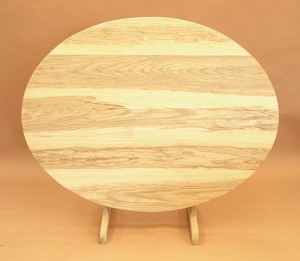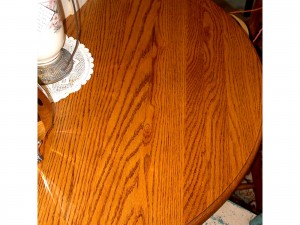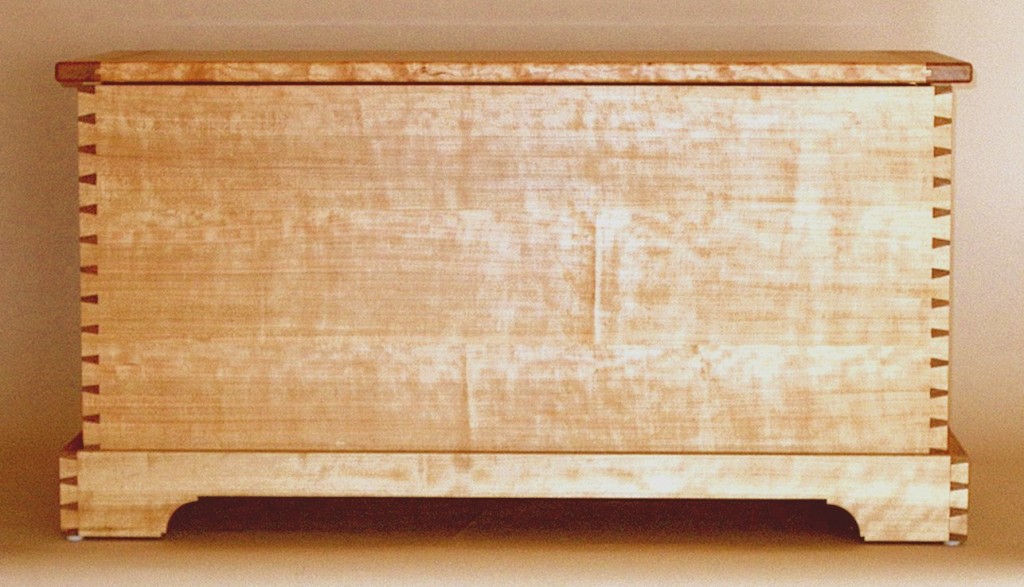Trees grow using annual growth rings, the coincentric circles seen in the end of a log or the top of a stump. When a log is sawn into lumber, the faces and edges of a board intersect those growth rings. The resulting patterns that appear on the faces and edges I call “grain patterns” and there are two basic types.
 This provincial style table top has five boards. The darker middle of each demonstrates “ovals and arches,” the most common type of grain pattern. Some people prefer this grain pattern feeling it is more active and more natural. When the grain pattern is fairly consistent across the boards, and somewhat centered in each, the result can have balance and appeal.
This provincial style table top has five boards. The darker middle of each demonstrates “ovals and arches,” the most common type of grain pattern. Some people prefer this grain pattern feeling it is more active and more natural. When the grain pattern is fairly consistent across the boards, and somewhat centered in each, the result can have balance and appeal.
 When the ovals and arches run off the edges of some of the boards, the result can be irritating. This table found in a consignment shop is not very attractive.
When the ovals and arches run off the edges of some of the boards, the result can be irritating. This table found in a consignment shop is not very attractive.
The other basic type of grain pattern is “quartered and rift” resulting in fairly uniform parallel lines. One of the boards in the above consignment table top shows a quartered and rift grain pattern.
 This blanket chest front shows three boards, each quartered and rift. The “quieter” grain pattern allows the eye to focus on the overall front and dovetails, rather than the individual boards making up the front of the chest.
This blanket chest front shows three boards, each quartered and rift. The “quieter” grain pattern allows the eye to focus on the overall front and dovetails, rather than the individual boards making up the front of the chest.
I keep a collection of example grain patterns in my workshop to examine and discuss with interested visitors. In addition, a more detailed description can be found on my website at www.stephanwoodworking.com/CommonBoardGrainPatterns.htm.
